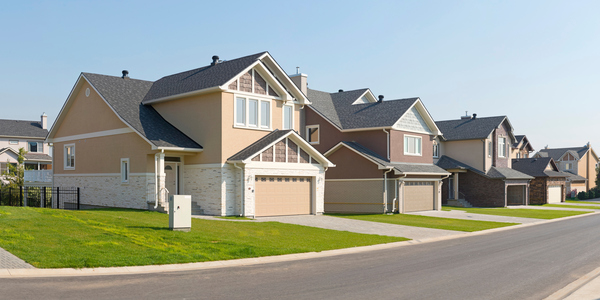Housing News
Floored: Trying to Choose a Carpet Alternative
February 20, 2013
If you weighed the options and found yourself with an aversion to carpet, then you now have a whole new list of choices ahead of you. Non-carpet flooring is an increasingly popular decision with a wide range of options.
Wood, If You Could
Versatile in just about every way, wood offers a lot of variability. Harder woods will give more resistance to damage while softer woods will provide a greater cushion for your feet. Wood will require a finish to protect it from moisture, stains, and normal wear and tear. You can order it pre-finished (applied by the manufacturer) or unfinished (to be applied by you) – the latter of which allows you to sand/stain/finish as you see fit, but becomes added work and mess for you so be warned. A third option, engineered wood flooring, is made up of multiple layers of inexpensive wood with a veneer of whatever style you’re going for. Engineered wood flooring is more ecologically responsible as it requires approximately four times less of a particular type of wood to achieve the same look as solid wood flooring.
Ore, You Could Try Rock
Several mineral and rock flooring options offer an array of styles and textures. While these are far more durable than wood, they are also less forgiving. A slip and fall of any kind is not a very enjoyable experience, but one on a solid stone floor is markedly less enjoyable. Damage is much less common, but in the event you somehow harm your floor, it is generally very difficult to repair or replace. Weight is also an issue and can limit where and how you have stone flooring. Still, proponents argue the selection of materials and textures makes virtually any design possible and provides one of the most desirable aesthetics of any flooring option.
Tile Be There for You
Available in several natural and manufactured materials, tile is second only to wood in terms of variety. It doesn’t offer the density variation of wood, but because it is held in place with grout it can be broken up and placed in a mosaic style opening up many design options wood can’t allow. While most rock candidates (marble, travertine, slate, etc.) come in tile form of some kind, there are manufactured materials (ceramic, porcelain, terra cotta, etc.) that can be more cost-effective and easier to work with and replace if need be.
You Can Laminate That!
Similar to engineered wood flooring, laminates are manufactured floors made to replicate natural materials. Laminates serve this purpose so well that they can even simulate actual photographs or custom-designed graphics making them an economical approach to achieving a desired look for any room. They’re durable and stain-resistant, but can’t be refinished or sanded so damage is irreparable. Diligent cleaning is required as debris can cause scratching and spills can cause warping.
Linoleum vs. Vinyl
Created in the mid-1800s, linoleum was a durable, versatile, easy-to-clean flooring discovery. It sat atop the flooring alternative heap for nearly a century until, after World War II, vinyl supplies became more abundant. The cheaper vinyl option, which offered similar qualities, became a popular alternative and all but replaced linoleum. However vinyl is a synthetic substance that is virtually unrecyclable. Linoleum, on the other hand, is made from natural ingredients like linseed oil and tree resin. In today’s world where being "green" is in vogue, linoleum is now seeing a resurgence.
Cork It!
Another natural flooring option is cork. Harvested using only the bark of the cork oak tree, cork is a renewable and environmentally responsible resource. It absorbs sound and impact in a way similar to carpet and much better than its counterparts. Cork has commonly been used in libraries and churches for this purpose. Additionally, cork is a good insulator for heat and has a degree of fire resistance, as well as being insect-resistant and anti-allergen. On the downside it is prone to expansion and warping in humid environments and, as can be expected with cork, it can be punctured or torn easily.
Prices will fluctuate a lot depending on what flooring option you go with. It is important to consider how much foot traffic or heavy furniture the floor will experience before becoming attached to a certain look. Consider your environment as well – insect activity and weather will also affect the performance and longevity of your floors.





 Smart Moves Start Here.
Smart Moves Start Here.